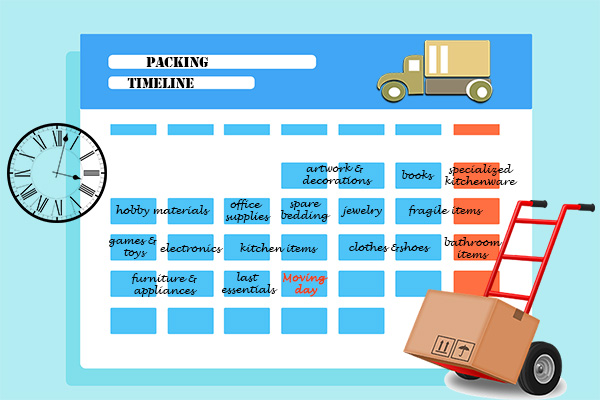Know About Retail Site Selection Checklist

Choosing the right location can have a profound impact on attracting foot traffic, increasing sales, enhancing brand visibility, and ultimately, ensuring the viability of a store.
Conversely, hasty decisions in site selection can undermine even the most meticulously planned retail ventures.
An ideally positioned retail outlet can also streamline logistical and operational aspects across the entire chain, resulting in cost savings related to delivery, returns, and customer acquisition.
What is Site Selection for a Retail Location?
Historically, the process of retail site selection involved laboriously sifting through physical binders of spreadsheets, zoning plans, and Census data.
Even then, the outcome was often more reliant on intuition and experience than scientific precision.
Fortunately, contemporary advances in location analytics and sophisticated tools have revolutionized this process, minimizing guesswork and accelerating the decision-making timeline, ultimately yielding superior results.
The 4 Step Site Selection Process to Identify Optimal Locations
1. Identify the Project Team and Define the project requirement
The initial step involves forming a dedicated project team. This team should consist of individuals representing various key departments and expertise areas within the organization.
These typically include members from the executive team, business units, real estate department, logistics department, tax department, human resources, and may also involve external site selection consultants.
Key Dates: Determine critical project milestones and timelines.
Employee Skill Requirements: Specify the necessary skills and qualifications of employees to be hired.
Projected Headcount: Estimate the expected number of employees needed for the project.
Desired Labor Rates: Define the targeted wage rates or labor costs for the workforce.
Capital Investment: Determine the amount of capital investment required for the project.
Accessibility to Customers/Suppliers: Assess the accessibility of the project location to customers and suppliers, considering transportation and logistics aspects.
Real Estate Needs: Identify the type and size of real estate required for the project, including office space, manufacturing facilities, or other facilities.
Infrastructure Requirements: Outline any infrastructure needs, such as utilities, technology, and communication systems.
2. Conduct geographic filtering and Prepare a list of Finalists
To effectively filter potential locations, an extensive dataset is collected, forming the foundation for constructing a filtering model. This dataset comprises pertinent data that aligns with your site selection criteria.
Typical data variables include population statistics, demographic profiles, unemployment rates, cost of living indices, utility cost data.
Along with industry presence, material transportation considerations (inbound and outbound), wage rates, union dynamics, tax rates, time zone differentials, and other relevant factors.
The key areas of analysis typically include:
Workforce Analysis: A thorough examination of the available labor force, encompassing skills, qualifications, and workforce availability.
Infrastructure Assessment: Evaluation of the existing infrastructure, including transportation networks, utilities, and technological capabilities.
Logistics Considerations: Analysis of logistics and supply chain factors, considering accessibility to suppliers, distribution networks, and transportation efficiency.
Business Climate Evaluation: Assessment of the business environment and regulatory landscape in each location.
Economic Incentive Review: Investigation of economic incentives, grants, and incentives offered by regions or governments to attract businesses.
Real Estate Market Study: Examination of the real estate market conditions, including property availability, pricing, and suitability.
3. Site visits and Negotiations
During immersive tours, the project team engages in a series of meetings and discussions with various stakeholders in each community, which may include:
Community Leaders: Discussions with local community leaders provide insights into the community’s vision, values, and potential for collaboration with your project.
Regional Economic Development Officials: Meetings with economic development authorities help in understanding the incentives, resources, and support available to businesses in the area.
Workforce Training Representatives: Interactions with workforce training representatives shed light on the availability of skilled labor, training programs, and workforce development initiatives.
Staffing Agencies: Conversations with staffing agencies allow for insights into the local labor market, including available talent pools and hiring processes.
Local Employers: Engaging with existing local employers offers valuable perspectives on the business climate, labor force quality, and potential partnerships.
Utility Providers: Discussions with utility providers help assess the reliability, availability, and costs of essential utilities such as water, electricity, and telecommunications.
Real Estate Brokers: Meetings with real estate brokers provide an overview of available properties, market conditions, and potential real estate options.
Then the project team initiates concurrent negotiations for both economic incentives and real estate terms. This phase requires careful management to ensure that negotiations are strategically controlled.
It is essential to maximize leverage and ensure that commitments related to real estate do not conflict with the company’s ability to secure the negotiated economic incentives.
Effective negotiation during this stage is critical to securing favorable terms and conditions for the project’s successful implementation.
4. Securing your real estate and economic incentives
The construction team takes charge of this phase and undertakes the following key activities:
Detailed Project Planning: The construction team develops comprehensive project budgets and schedules, outlining the financial resources required and the timeline for the project’s execution.
Vendor Selection: Selecting the right vendors, including architects, engineers, and general contractors, is paramount to the project’s success. Choosing professionals with experience in similar facility types can significantly impact the project’s ability to stay on schedule and within budget.
Construction Management: The construction team oversees the entire construction process, ensuring that all aspects of the project are executed according to the plans and specifications.
This includes coordinating construction activities, monitoring progress, and addressing any issues that may arise during the build-out.
Quality Assurance: Maintaining strict quality control measures to ensure that the construction adheres to industry standards and meets the project’s quality requirements.
Project Completion: The construction team manages the project until it reaches completion, overseeing the final touches and preparations for the project’s operational phase.
Next step entails adhering to the terms and conditions outlined in the economic incentive agreements. Here’s what this step involves:
Data Submission: Regularly submit essential data, including payroll reports, employee training expenses, capital investment figures, and real and personal property tax information to the relevant economic development agencies and government entities.
Compliance Reporting: The frequency of data submission varies depending on the specific requirements stipulated in the economic incentive agreements. Reporting may be required on a monthly, quarterly, or annual basis.
Preserving Access to Incentives: Failing to maintain compliance can result in the loss of access to the promised economic incentives. It’s crucial to meet all reporting deadlines and requirements to ensure you receive the full benefits outlined in the agreements.
Retail Site Selection Checklist
When selecting a retail site, key considerations include foot traffic analysis to ensure high visibility and customer accessibility. Demographic research is crucial to align the store’s location with the target market’s profile.
Additionally, evaluating competitors in the area helps in understanding market saturation and potential for success. It’s also essential to assess the site’s proximity to suppliers and logistical convenience to streamline operations and reduce costs.
This comprehensive approach ensures a strategically chosen location that maximizes business potential.
4.1 Identify and Prioritize the Specific Markets You Want to Enter
Which markets have the right types of consumers for your business?
Which markets are home to the right types of consumers for your business? While median income levels and demographic data are significant, they may not fully capture the nuanced shopping behaviors driven by lifestyle factors.
Can your existing supply chain structure be extended to support this market at an acceptable cost?
Assess whether your existing supply chain can effectively support the new market at a reasonable cost. Some markets may be geographically distant and may require a gradual expansion approach.
What anchors and complementary brands exist in the trade area?/What is competition like in the area?
What is the competitive landscape like in the selected area? Identify both national brands and local mom-and-pop competitors. Recognize that local establishments often possess strong community ties that can be challenging to replicate.
Identify both national brands and locally cherished mom-and-pop shops.The latter often possess deep community ties that can be challenging to replicate as a newcomer.
Investigate what makes your competitors successful. Examine their competitive advantages, such as unique operating hours, premium services, or other distinguishing features.
Understanding these factors will inform your decision-making process and help you determine your brand’s potential success and the most effective product or service offerings in a given market.
Is this area growing or declining?
Research the historical and projected growth or decline trends in the selected location. Keep an eye on ongoing and future developments in the area, which can indicate burgeoning neighborhoods and increased population.
Investing in locations early can establish your brand as a key player in the neighborhood, providing a competitive advantage before the market becomes saturated.
4.2 Within Each Market, Identify the Trade Areas That Offer the Best Growth Potential
Performance estimates, either in terms of a forecast or an index score, meet your minimum threshold.
Ensure that performance estimates, whether through forecasting or index scoring, meet your minimum thresholds.
Where do you have the potential to build multiple units?
Evaluate whether the chosen market offers the potential for establishing multiple units. Entering markets where you can build multiple units allows for economies of scale in marketing and operational support.
Expanding into a new market requires a substantial investment. To maximize efficiency and cost-effectiveness, consider focusing on markets where you have the potential to establish multiple units.
This approach enables you to benefit from economies of scale in marketing and operational support.
Right mix of cotenants or other area draw factors
Evaluate whether the site offers a complementary mix of cotenants or other factors that can attract customers to the area. These factors can significantly impact foot traffic and business success.
Good visibility and ease of access
Assess the site’s visibility to passing traffic and its ease of access. A location that is highly visible and easily accessible can draw in more customers.
Examine traffic volumes and the direction of traffic flow, particularly for businesses that rely on specific dayparts, such as convenience-oriented stores. Ensuring a steady flow of potential customers is essential for success.
4.3 Within Each Trade Area, Identify the Optimal Site
Site financials (cost of construction, cost of rent) meet your financial objectives.
Analyze the site’s financial aspects, including the cost of construction or renovation and the rental expenses. Ensure that these financial factors align with your budget and financial objectives.
Cannibalization Estimates
Evaluate the degree of trade area overlap and cannibalization percentages, ensuring they fall within acceptable limits.
Customer Journeys
Analyze customer journey data to understand the willingness of customers to visit multiple retailers with similar offerings in the trade area.
Market Saturation
Determine if the market appears saturated with similar retail outlets and whether they are experiencing declining performance, signaling a potentially oversaturated market.
Identify regions with promising factors where competitors are not yet present. This may indicate whitespace opportunities where your brand can fulfill unmet demand.
How GeoIQ Revolutionizes Retail Site Selection
To make data-driven decisions and streamline the process of retail site selection, businesses need advanced tools and insights.
GeoIQ, a cutting-edge geospatial intelligence platform, offers a game-changing solution for businesses looking to optimize their retail site selection process.
1. Precise Location Analysis
GeoIQ leverages advanced spatial analytics to help you identify the most suitable retail locations with precision.
It takes into account a wide range of factors such as demographics, foot traffic, competitors, and more to determine the optimal site for your retail venture.
This level of granularity ensures that you make data-driven decisions that align with your business goals.
2. Market Assessment
GeoIQ’s capabilities extend to assessing the market potential of different locations. By analyzing market trends, consumer behavior, and economic indicators, GeoIQ helps you pinpoint areas with high growth potential.
This invaluable insight ensures that you invest in locations with a promising future, mitigating risks and maximizing returns.
3. Competitor Analysis
Understanding your competitors is crucial in the retail industry. GeoIQ provides comprehensive competitor analysis, allowing you to evaluate the presence and performance of rival businesses in your target areas.
This information helps you identify market gaps and opportunities, enabling you to position your retail store for success.
4. Data Integration
GeoIQ seamlessly integrates with various data sources, including demographic data, point-of-sale data, and third-party datasets.
This integration enables you to enrich your location analysis with up-to-date information, ensuring that you have a comprehensive understanding of the retail landscape.
5. Cost-Effective Expansion
By optimizing site selection with GeoIQ, you can avoid costly mistakes such as choosing suboptimal locations or experiencing unexpected market challenges.
This leads to cost-effective expansion strategies and ensures that your retail stores have a solid foundation for growth.
Conclusion
The importance of a well-considered retail site selection checklist cannot be overstated. It serves as the compass guiding businesses toward optimal locations where success can thrive. This comprehensive checklist, encompassing factors like demographics, competition, accessibility, and market trends, empowers retailers to make data-driven decisions.
By meticulously assessing each criterion, businesses can mitigate risks, maximize profits, and ensure long-term growth. The checklist’s structured approach streamlines the site selection process, making it more efficient and cost-effective.
For more details on retail site selection, please get in touch with us at hello@geoiq.io, or visit our website https://geoiq.io/.






